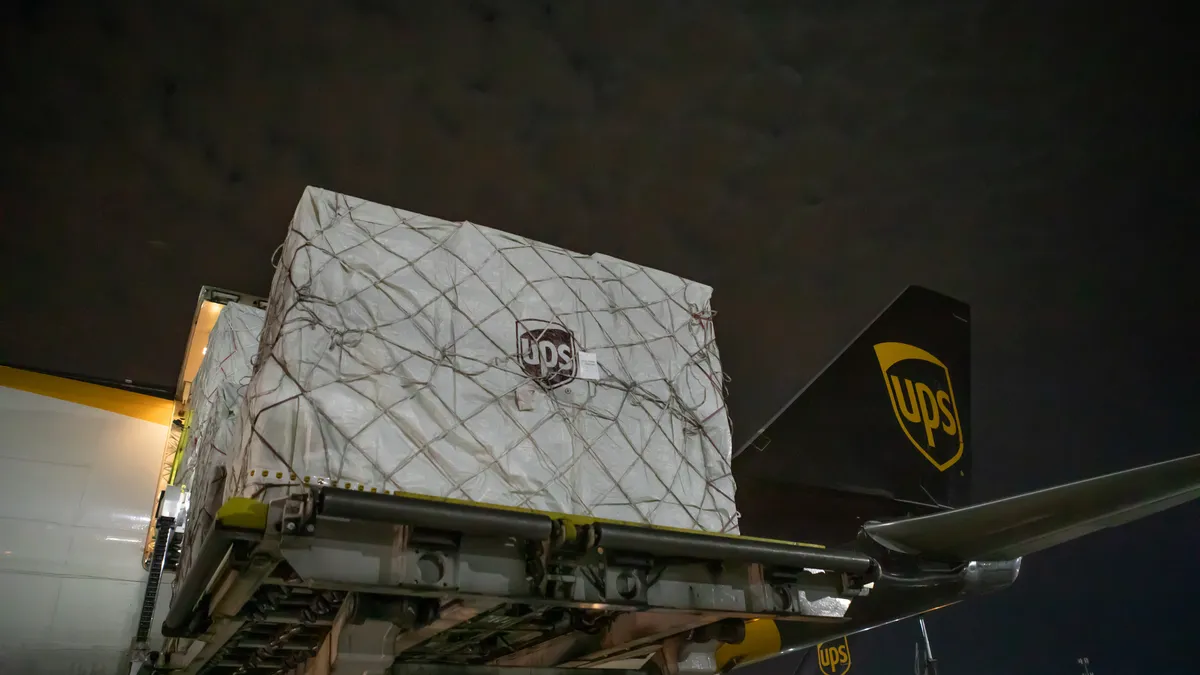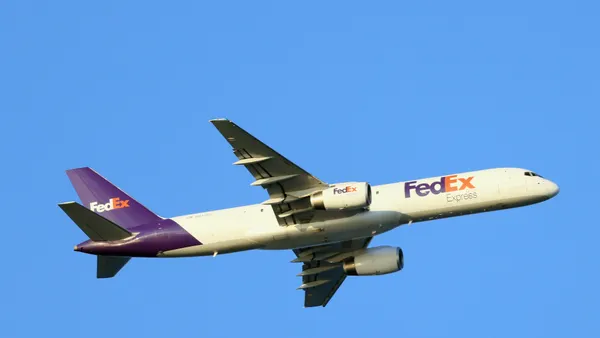Dive Brief:
- Global air cargo volumes were up 5% year over year in July as shippers opted to move goods by air as a strategy to circumvent U.S. tariffs, Xeneta reported Aug. 6.
- Monthly spot rates dipped for the third consecutive month, falling 2% YoY to $2.55 per kilogram, per Xeneta.
- Rates from Southeast Asia to North America fell by 16% YoY to $4.87 per kilogram as capacity strains eased. Prices from Northeast Asia to North America were primarily flat at $4.81 per kilogram, down 1% YoY.
Dive Insight:
July’s sudden spike in global air cargo demand follows June’s slight 1% YoY gain. Xeneta attributed July’s upturn to tariff-driven cargo frontloading and ongoing market uncertainty.
“What we are seeing currently is [a] mode shift and that is helping the airfreight market in the short-term. If you’re trying to circumvent tariffs, you’re going to want to do it fast, and a plane is faster than a ship,” said Chief Airfreight Officer Niall van de Wouw. “Having goods in an ocean container for 30 days will feel like a very long time for a lot of businesses right now.”
The Trump administration lifted its pause on country-specific reciprocal tariffs Aug. 7 after pushing back several previously planned implementation deadlines. Meanwhile, many U.S. trading partners, including the European Union and Japan, have reached reach deals and deal frameworks with the Trump administration regarding tariffs and other trade policies. However, the fluctuating state of U.S. tariff policies has left supply chains in flux as retailers and other shippers look to mitigate exposure, casting a murky industry outlook.
Regardless, uncertainty in relation to tariffs is one of the “few things that might protect air cargo demand in the coming months,” especially as “hardly anything has been finalised,” said van de Wouw.
Although shippers are using air cargo as an opportunity to respond to market changes quicker, the “piggybacking” will eventually stop, said van de Wouw.
“My best assessment is that the confusion is encouraging more companies to use airfreight than would like to, but air cargo is proving its value once again,” he said.
The end of the de minimis exemption Aug. 29 is also set to rock supply chains as it reshapes parcel demand, adding further market complications. Exemptions for shipments from China and Hong Kong have already been cut by the U.S., which accounted for roughly two-thirds of all U.S.-bound de minimis shipments, according to Xeneta. Meanwhile, spot rates to the U.S. from China dropped 11% YoY to $4.26 per kilogram, partially due to both the de minimis ban and tariffs.
In June, low-value and e-commerce exports routed for the U.S. dropped 50%, per Xeneta. UPS, in fact, relayed during a Q2 2025 earnings call that elimination of the de minimis exemption and tariff pressures caused average daily volumes from China to the U.S. to drop nearly 35% in May and June.
“When there is a mess and chaos in international trade, it is to the benefit of airfreight, as we have seen before. And, right now, we have it on an unprecedented global scale,” van de Wouw said.
Editor’s note: This story was first published in our Logistics Weekly newsletter. Sign up here.















